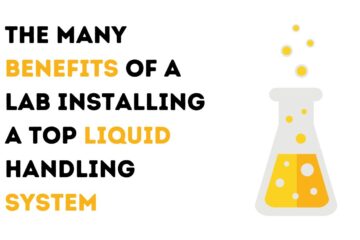In the vast landscape of healthcare, congenital heart defects (CHDs) stand as a silent challenge affecting millions worldwide. To address this pervasive issue, the importance of raising awareness cannot be overstated.
This article delves into the significance of breaking down barriers and fostering understanding through raising awareness about congenital heart defects, a crucial step toward improved diagnosis, treatment, and support.
Understanding Congenital Heart Defects
Before delving into the urgency of raising awareness, it is essential to understand what congenital heart defects entail.
CHDs are structural abnormalities in the heart present at birth, affecting the organ’s chambers, valves, or blood vessels.
These conditions vary in severity, some requiring immediate medical intervention while others may go undetected for years.
The Prevalence of Congenital Heart Defects
CHDs are more common than one might think. According to the Centers for Disease Control and Prevention (CDC), approximately 1 in 100 babies are born with congenital heart defects globally.

These conditions represent a significant public health concern, necessitating heightened awareness to ensure early detection and effective management.
Early Detection and Intervention
Raising awareness about congenital heart defects is pivotal for early detection and intervention. Timely identification of CHDs allows for prompt medical attention, leading to better outcomes for affected individuals.
Increased awareness empowers parents, caregivers, and healthcare professionals to recognize potential signs and symptoms, facilitating early diagnosis and appropriate intervention.
The Impact of Raising Awareness:

- Knowledge Dispels Myths: Raising awareness dispels myths and misconceptions surrounding congenital heart defects. By disseminating accurate information, communities can foster a deeper understanding of the conditions, eradicating stigma and promoting empathy for individuals and families affected by CHD.
- Encouraging Prenatal Screenings: Awareness initiatives are crucial in promoting prenatal screenings. Educating expectant parents about the importance of routine ultrasounds and fetal echocardiography can lead to early detection of CHDs, allowing for proactive planning and specialized care.
- Facilitating Support Networks: Raising awareness creates a ripple effect, fostering the development of support networks. Families dealing with congenital heart defects benefit immensely from connecting with others who have faced similar challenges. Support groups, online communities, and advocacy organizations thrive on increased awareness, offering valuable resources and emotional support.
- Empowering Advocacy: Individuals and families impacted by congenital heart defects often become advocates for awareness. Their stories, shared through various platforms, serve as powerful tools for educating the broader community and influencing policymakers to prioritize research, treatment, and support resources.
- Influencing Public Health Initiatives: A heightened awareness of congenital heart defects contributes to informed public health initiatives. Governments, healthcare organizations, and advocacy groups can collaborate to implement screening programs, fund research, and provide resources for families affected by CHD.
How to Raise Awareness:
- Utilize Social Media: Social media platforms are powerful tools for disseminating information. Engage in awareness campaigns, share stories, and use relevant hashtags to amplify the reach of your message. Encourage individuals to share their experiences, fostering community and solidarity.
- Organize Awareness Events: Host events, webinars, or workshops to raise awareness about congenital heart defects. Invite healthcare professionals, survivors, and families to share their insights. These events provide platforms for education, discussion, and community building.
- Collaborate with Healthcare Professionals: Work closely with healthcare professionals to disseminate information. Partner with hospitals, clinics, and medical organizations to distribute educational materials, conduct workshops, and offer resources to healthcare providers and the general public.
- Engage Schools and Educational Institutions: Collaborate with schools and institutions to integrate information about congenital heart defects into health education curricula. Raise awareness among teachers, students, and parents, creating a more informed and empathetic community.
- Create Multimedia Content: Develop informative and engaging multimedia content, such as videos, infographics, and podcasts, to reach diverse audiences. Visual storytelling can be a compelling way to convey information and evoke empathy.
Conclusion
Raising awareness about congenital heart defects is a collective responsibility that transcends geographical boundaries.
By breaking down barriers through education, dispelling myths, and fostering empathy, we pave the way for early detection, timely intervention, and comprehensive support for those affected by CHD.
Whether through grassroots initiatives, social media campaigns, or collaborative efforts with healthcare professionals, raising awareness resonates far beyond individual stories—it transforms communities, influences policies, and ultimately contributes to a world where congenital heart defects are met with understanding, compassion, and practical solutions.
See Also: How Artificial Intelligence Is Revolutionizing Patient Care










